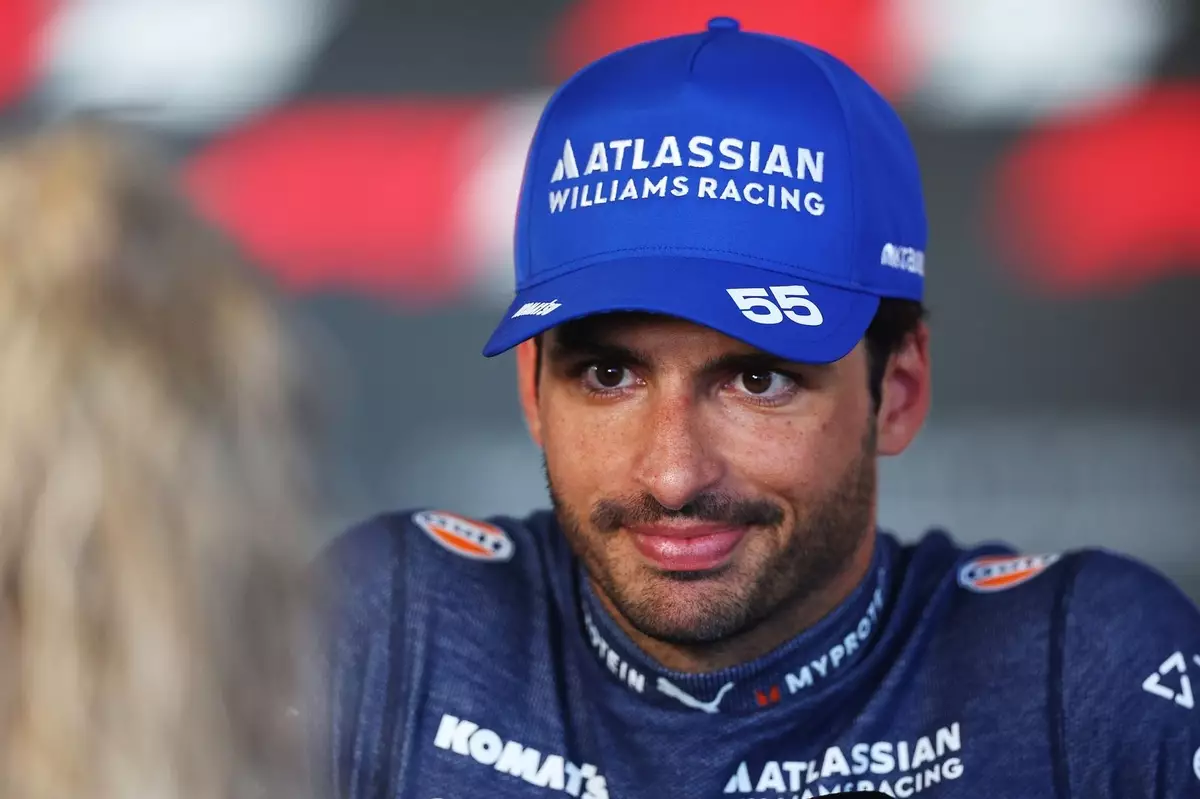Revitalizing the Challenge: Carlos Sainz’s Determination with Williams
The fast-paced world of Formula 1 doesn’t just race on the track; it races through driver contracts and team dynamics as well. For Carlos Sainz, his transition from Ferrari to Williams opens a new chapter in his career, one filled with opportunities to redefine his legacy. After a challenging year with Ferrari, navigating a complicated atmosphere while knowing his exit was imminent, Sainz turns the page with a new ambition: to build a competitive team from the ground up at Williams. This move isn’t just a career decision; it’s a chance for Sainz to reshape the narrative surrounding him in the F1 paddock.
I remember watching Sainz’s journey closely and feeling inspired by his resilience. His decision to join Williams is fueled by both personal desire and a compelling vision for reviving this historic team. Despite its storied past, Williams has faced challenges that have clouded its presence in F1. Yet, Sainz sees potential where others see fatigue. In discussions with Team Principal James Vowles, he recognized an ambitious project aimed at revitalizing the team’s performance. “If I can’t join a top team, I’ll help build one,” he expressed, showcasing his transformative mindset focused on collective achievement rather than individual success.
This choice of Sainz to roll up his sleeves with a lower-tier team instead of chasing the glitter of higher-ranked squads is refreshing. It reveals a maturity and insight not commonly found within Formula 1’s highly competitive atmosphere, where drivers often cling to prestigious positions. Sainz’s vision is not merely about regaining personal glory; it’s about committing to revitalizing a team that desperately needs it.
Key Takeaways
- Carlos Sainz transitions from Ferrari to Williams, seeking to redefine his legacy.
- He views Williams as an opportunity to build a competitive team from scratch.
- Sainz’s decision reflects maturity and commitment to long-term goals over immediate success.
The Untapped Potential of Williams
Sainz’s decision to join Williams stems from both personal desire and the vision of revival within this historic team. Williams, despite its storied past, has faced challenges diminishing its F1 presence. Sainz sees potential where others may see fatigue. In discussions with Team Principal James Vowles, he recognized an ambitious project aimed at revitalizing the team’s performance. “If I can’t join a top team, I’ll help build one,” he expressed, showcasing his transformative mindset not just focused on individual success but on collective achievement.
It’s refreshing to see a driver like Sainz opt to roll up his sleeves in a lower-tier team rather than chase the glitter of higher-ranked squads. This decision reveals maturity and insight not commonly found within Formula 1’s highly competitive atmosphere, where drivers often cling to top spots’ prestige. Sainz’s vision isn’t merely about regaining personal glory; it represents a profound commitment to revitalizing a team that desperately needs it.
The Experience of Transition
Transitioning from Ferrari—a team known for its rich heritage and ongoing quest for dominance—to Williams certainly poses its own challenges. Sainz admits that his previous role brought difficulties when racing with the awareness of an impending exit. However, he asserts that the familial feel of Williams provides a refreshing change of pace. For many drivers, such changes’ psychological effects could be detrimental, but Sainz seems to turn adversity into strength.
The experience of moving from a prestigious team to one rebuilding itself is complex. Yet, Sainz approaches this transition with optimism emphasizing collaboration and long-term goals. His sentiments reflect a burgeoning family spirit within Williams’ ranks—a feeling absent during his final season at Ferrari. Rather than wallowing in the past, Sainz invests in Williams’ future, fostering growth as both driver and leader within the team.
Navigating the Competitive Landscape
Despite being seasoned with immense experience, Sainz faced last year’s perplexing driver market where elite teams like Red Bull and Mercedes raised red flags about signing him. Their decisions to sign less experienced talents created unique crossroads for him. His candid acknowledgment of being overlooked speaks volumes about self-awareness and understanding of sport intricacies. He refrains from dwelling on rejection but channels energy into fresh starts—an approach reshaping perceptions of him as both driver and vital contributor to team identity.
His deliberate choice in joining Williams stems from realistically evaluating trajectory—confirming patience and strategy are as crucial as speed and skill on track. A multi-year deal signifies not just commitment but intent to grow alongside—rare in sports dominated by transient stakes and short-term gains.
Sainz’s journey isn’t simply about physical ascent to podiums; it’s crafting resilience narratives believing in potential. Thriving within Williams’ rebuilding landscape serves powerfully reminding success isn’t marked only by race wins but enduring legacies creation too! Carlos poised leaving indelible marks—not only achieving personal accolades but foundational player reviving storied teams.
Final Thoughts
Carlos Sainz’s move from Ferrari to Williams is more than just changing teams; it’s about embracing opportunities for growth and transformation at every level. His determination resonates beyond racing circuits as he seeks not just personal milestones but collective victories for Williams too! What stands out most is how he embodies resilience—facing challenges head-on—turning them into strengths propelling forward journeys inspiring all enthusiasts watching closely these developments unfold over coming seasons!
Carlos Sainz Formula 1 Williams Racing Motorsport Strategy


Leave a Reply